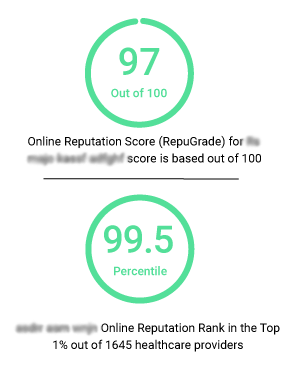SEO Reports: What Metrics Really Matter to Clients

Do you know what SEO metrics your client actually value the most? What metric makes them cheerful? Read on to know.
The world of digital marketing can be a tricky one, and when you’re dealing with one or more websites, it can be tough to track. When it comes to figuring out how web sites and social media platforms are working for their clients, digital agencies analyze data to create SEO reports. These reports are way to show your effort you’ve put into their websites.
But, are your clients really interested to see all the metrics that you show to them? The answer is, they are not. If you are not showing them what they want, they might even think of switching. For the digital agencies, we have chalked out 4 SEO metrics that matters the most to them.
Lead Generation
One of the most important metrics that a digital agency needs to provide its clients should be fairly obvious. The company you’re working for is going to want to know how many leads your content and promotional efforts are producing. However, actually tracking the right number of leads that you’ve generated isn’t always as easy as it sounds.
For the most part, lead generation is tracked via form fills. A potential customer or client goes onto a website after reading a piece of content, or clicks a link from a third-party site or social media site and fills out a form. From there, a sales representative can help the potential customer or client.
While forms can be helpful for generating business, a lot of companies are finding out that phone calls are a better source for actual leads that pan out to successful consumer spending. For the most part however, business owners have to actually keep track of these leads on their own.
Still, digital agencies can compile this data if collected and make it part of their monthly SEO reports to see what is working and what is not. It just takes some communication and data collection from the company paying for the marketing too.
Related Post from the blog: 4 Drifts to Change the Face of Digital Marketing in 2015
Lead Costs
Every business owner knows that you have to spend money in order to make money and build a company. If you’re a high profile company, that’s even more the case since further development of an existing brand can be difficult. No business wants to spend more money than they have to though, and that’s especially true when it comes to digital marketing.
The thing that you need to include as a digital agency is the average cost per lead. That means that if you have 1,000 leads in a given period, you need to break down the cost of each lead.
For example, if your client pays you $1,000 for the work you’ve done and you get them 1,000 leads, the cost is $1 per lead. Of course this is a simplified example, and figuring out how much each lead costs could be a bit more complex for your digital agency.
Still, it is something that you need to do for your clients. They’re going to want this information, and even if they don’t ask for it specifically they’re going to wonder about it. Without this information your clients could start to wonder if your services are really worth the money they pay, and that can lead to a loss of revenue for you.
ROI or Return on Investment
Tracking leads and figuring out how much money a client spends on leads is very important, and if you want to run a successful digital agency you need to do it. However, the most important thing that you need to keep track of if you want to make your clients happy is return on investment, or ROI.
Simply put, ROI is how much money you are helping to bring to the business you are working with. While you may not be able to put money directly in their pocket, and the leads you generate do need to be taken care of by a skilled sales team, you do have to show that you are earning money for the companies you work for.
The more you can show, the better off you are of course. There are times when you’ll be able to show little more than a small return on investment, but you can use that leverage to build bigger campaigns with greater returns.
If you don’t show any return on investment you’ll find that your clients are going to start looking elsewhere for digital marketing services.
New Opportunity Value
What you are giving them is new opportunities and ways to expand to a different market base. Generally this is referred to as new opportunity value, and it can mean a lot to companies of different sizes. For small companies, getting new clients outside of their regular demographic can help keep them in business and grow their marketing efforts almost exponentially.
For bigger companies, reaching a wider audience base via your digital marketing efforts is pretty much the only way to grow. After all, large companies are already familiar to most people who meet their immediate demographic, and some people simply won’t be customers or clients because they don’t need or like a product or service being offered.
Giving companies new opportunities with other clients or customers outside their regular base will help them grow indefinitely. That’s worth something – even if it doesn’t result in an immediate windfall of cash for your client. It might take a few years even, but in most cases it's beneficial.
Comments are closed


